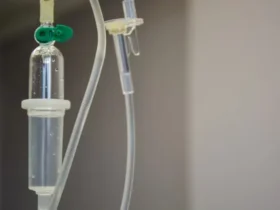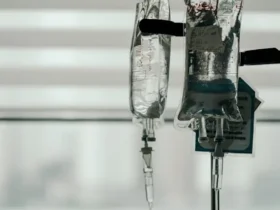Stepping into the journey of recovery from substance dependency requires an arsenal of tools, methods, and unwavering support. Among such resources, MAT medication assisted treatment is a crucial player, combining the use of approved medications with counseling and behavioral therapies to address the multifaceted nature of addiction holistically. MAT seeks to bridge the gap between the biological and psychological aspects of addiction, catering to both with a comprehensive approach. The synergy of medication and supportive therapy addresses the withdrawal symptoms and cravings while enabling individuals to work through the psychological triggers of their addiction.
Despite its effectiveness, MAT is often clouded by myths and misunderstandings, primarily because it merely substitutes one substance for another. This skewed view overlooks the intricacies of MAT’s therapeutic aspects, which are crucial for sustainable recovery and long-term sobriety. The integration of medications in the recovery process is a strategic move that targets the biological underpinnings of addiction, setting a stable foundation upon which individuals can rebuild their lives. It remains imperative that the conversation around MAT remains clear, factual, and devoid of stigma to ensure that those in need can access its life-altering benefits without prejudice.
Medications Commonly Used in MAT
Mat’s approach to recovery is highly personalized, and the medications used within its scope are carefully selected to match the individual’s unique needs. The choice of drugs is a critical decision made in the context of several factors, such as the type of substance dependence, the patient’s overall health, and specific treatment goals. Methadone, Buprenorphine, and Naltrexone are some of the pivotal MAT medications approved by the FDA, each with distinct pharmacological actions suited for different types of addiction. Methadone, for instance, is a long-acting opioid that reduces cravings and withdrawal symptoms without producing the high associated with opioid misuse. Buprenorphine partially activates opioid receptors to alleviate cravings while preventing misuse due to its ‘ceiling effect.’ On the other hand, Naltrexone blocks opioid receptors and is used to avoid relapse after detox.
The administration of these medications is meticulously overseen by healthcare professionals who are trained in addiction treatment. Providers assess each patient’s suitability for a particular medication and may use trial and error to find the best fit. For many, the proper medication can make a significant difference in their recovery journey, often being the difference between sustained sobriety and relapse. As a testament to the personalized nature of MAT, the healthcare provider’s ongoing assessment and patient feedback play a crucial role in adjusting the medication regimen for the best outcomes.
Benefits of Medication-Assisted Treatment
The benefits of MAT are multifold, both in immediate impact and long-term recovery. One of the most significant advantages of MAT is the reduction in the likelihood of relapse. By alleviating the physiological imperatives of addiction, MAT makes it possible for patients to focus on the psychological aspects of their recovery without the constant distraction of cravings and withdrawal symptoms. This focus is crucial for engaging in therapeutic processes, building resilience, and developing healthy coping mechanisms essential for maintaining sobriety. Evidence from research supports this, indicating that individuals involved in MAT programs often have better retention in treatment and lower rates of substance use compared to those not receiving MAT.
Additionally, MAT’s role in improving individuals’ overall quality of life in recovery cannot be overstated. The stability these medications provide allows for a return to normalcy, where individuals can participate more fully in their relationships, work, and community. They are better positioned to handle the day-to-day stresses that might previously have triggered substance use. When the mists of addiction lift, the resulting clarity can empower those in recovery to pursue life goals and feel hopeful about their future — a dramatic shift from the hopelessness that often accompanies substance dependency.
Integrating MAT Into a Comprehensive Treatment Plan
Successful addiction treatment is seldom a linear process; it often requires a dynamic, integrated approach that evolves alongside the individual’s journey toward recovery. A comprehensive treatment plan incorporating MAT as a central element can significantly enhance the positive outcomes of recovery efforts. This plan includes the appropriate use of medications and access to counseling services, social support, and a continuum of care that extends into aftercare planning. Providers must work collaboratively with each patient, tailoring their approaches to address specific addiction patterns, psychological challenges, and life circumstances.
Interdisciplinary collaboration involving psychologists, social workers, physicians, and sometimes legal and financial advisors is also fundamental in MAT’s implementation. This team effort ensures that each aspect of an individual’s recovery is addressed, enabling them to navigate the complexities of addiction with comprehensive support. Moreover, treatment plans should be flexible and adapt as needs change. Staying attentive to an individual’s progress, setbacks, and changing life conditions allows providers to adjust treatment modalities, maintaining the effectiveness of the recovery program.
For those embarking on this recovery path, MAT signifies more than medication; it’s a symbol of a science-based, empathetic approach to addiction treatment. By embracing MAT within comprehensive care, individuals are not merely surviving but actively thriving and regaining control of their lives.
Understanding the Regulatory Framework for MAT
The regulatory environment for MAT is designed to promote the safe and responsible use of medications, ensuring that the benefits of MAT are delivered effectively while minimizing potential risks. Each medication used in MAT is subject to a complex legal and ethical framework that governs its distribution and administration. For example, certain MAT medications are tightly controlled due to their potential for misuse, necessitating careful management by specialized treatment providers.
Healthcare providers entrusted with prescribing MAT medications adhere to regulations that include patient evaluation, informed consent, and close monitoring of treatment outcomes. These safeguards serve not only to protect patients from adverse events but also to maintain public health and safety standards within communities.
Continuous evaluation of policy effectiveness and adaptation to the evolving landscape of addiction treatment is vital. Efforts to ensure follow-through on these regulations, alongside adjustments to address any identified shortcomings, contribute to a solid framework upon which MAT’s success rests.
Recent Advancements and Research in MAT
Innovation and scientific exploration continue to drive advancements in MAT, offering new insights and treatment options that can profoundly affect the field of addiction recovery. Emerging research aims to refine our understanding of how different medications can be utilized more effectively, exploring factors such as genetic predispositions, the impact of co-occurring mental health conditions, and the long-term outcomes of various MAT protocols. Progress in pharmacology may introduce novel medications with fewer side effects and increased efficacy. At the same time, digital health technologies could provide new monitoring and support platforms, enhancing MAT’s integration into patients’ everyday lives.
Collaboration between research institutions, clinicians, and policy-makers ensures that new findings inform practice and policy, ultimately improving patient outcomes. By staying current with the latest research and incorporating evidence-based practices, the promise of MAT continues to unfold. How Medication-Assisted Treatment Can Help Addicts Recover exemplifies the commitment to keeping abreast of recent news and research in the field, underscoring MAT’s pivotal role in addiction treatment strategies.
Conclusion: The Future of MAT in Addiction Therapy
Looking to the future, MAT stands as an integral component in the shifting landscape of addiction therapy. As societal attitudes progress and understanding deepens, we can expect to see MAT increasingly recognized for its critical role in comprehensive treatment strategies. The journey of recovery is deeply personal, and MAT offers a customizable and scientifically validated approach that considers the biological, psychological, and social dimensions of addiction. This complex interplay demands an adaptable and empathetic treatment model that MAT uniquely offers.
The promise of MAT is evident in its transformed lives and its potential to contribute to broader public health goals, such as reducing drug-related harm and fostering more resilient communities. As forward-thinking research expands our knowledge base, MAT will likely evolve, bringing new medications and methodologies into the fold and offering hope and healing to those navigating recovery.










Hello!! My name is Annabella
I love to eat, travel, and eat some more! I am married to the man of my dreams and have a beautiful little girl whose smiles can brighten anyone’s day!